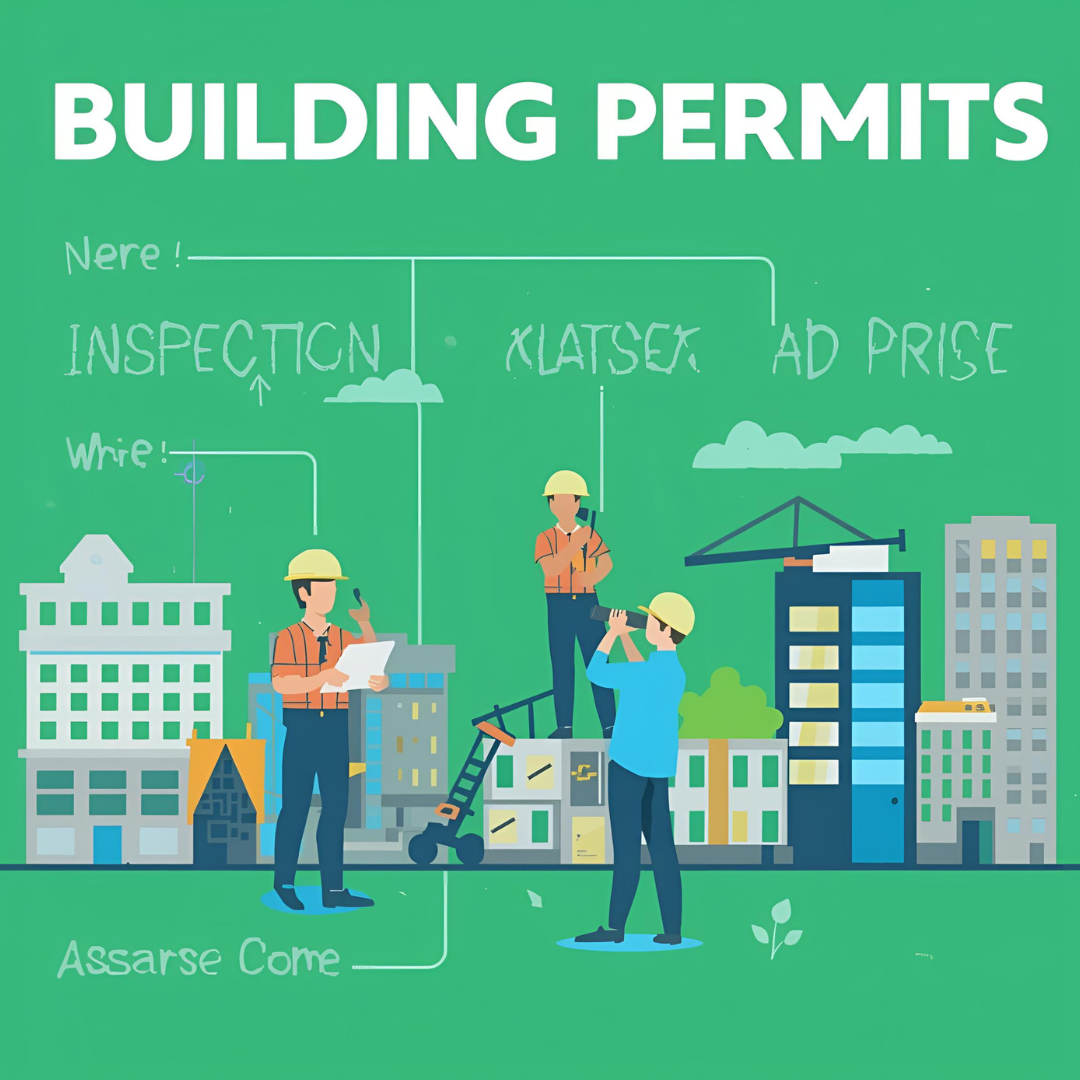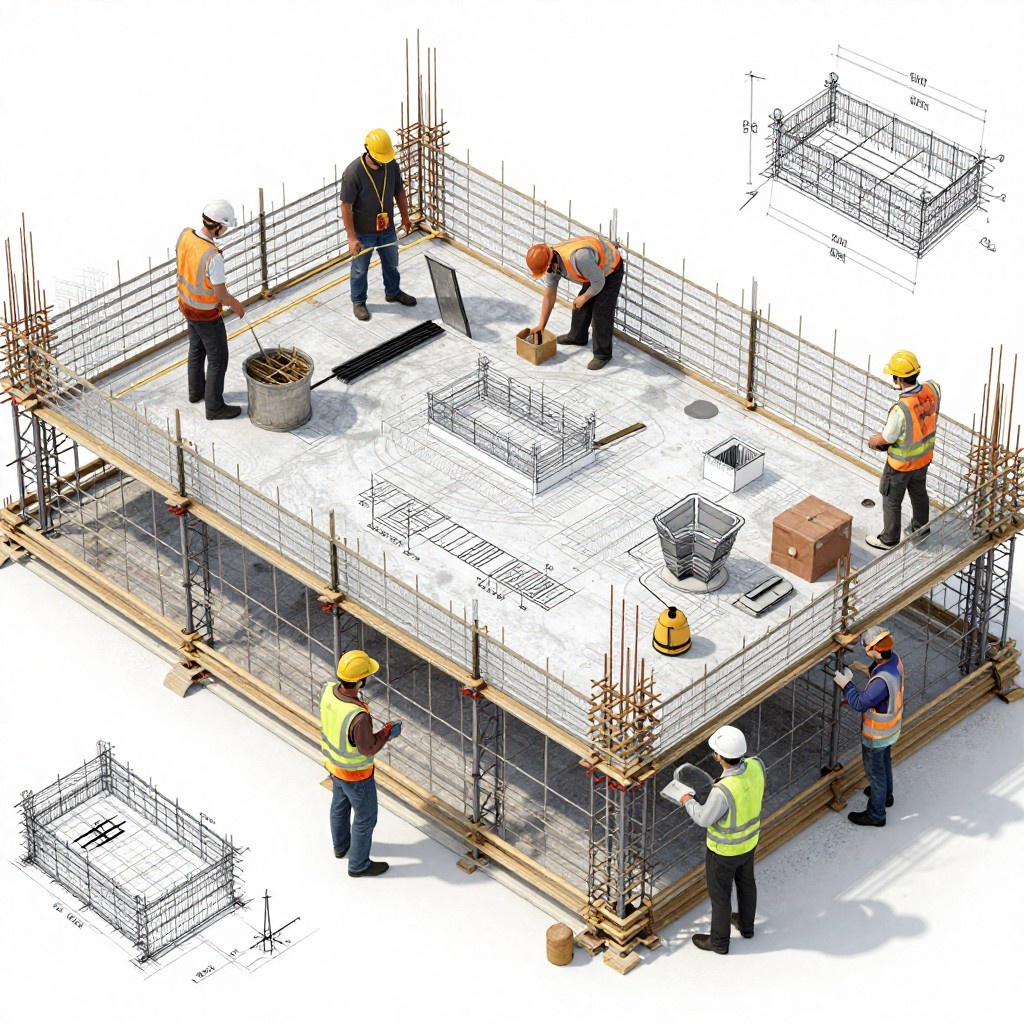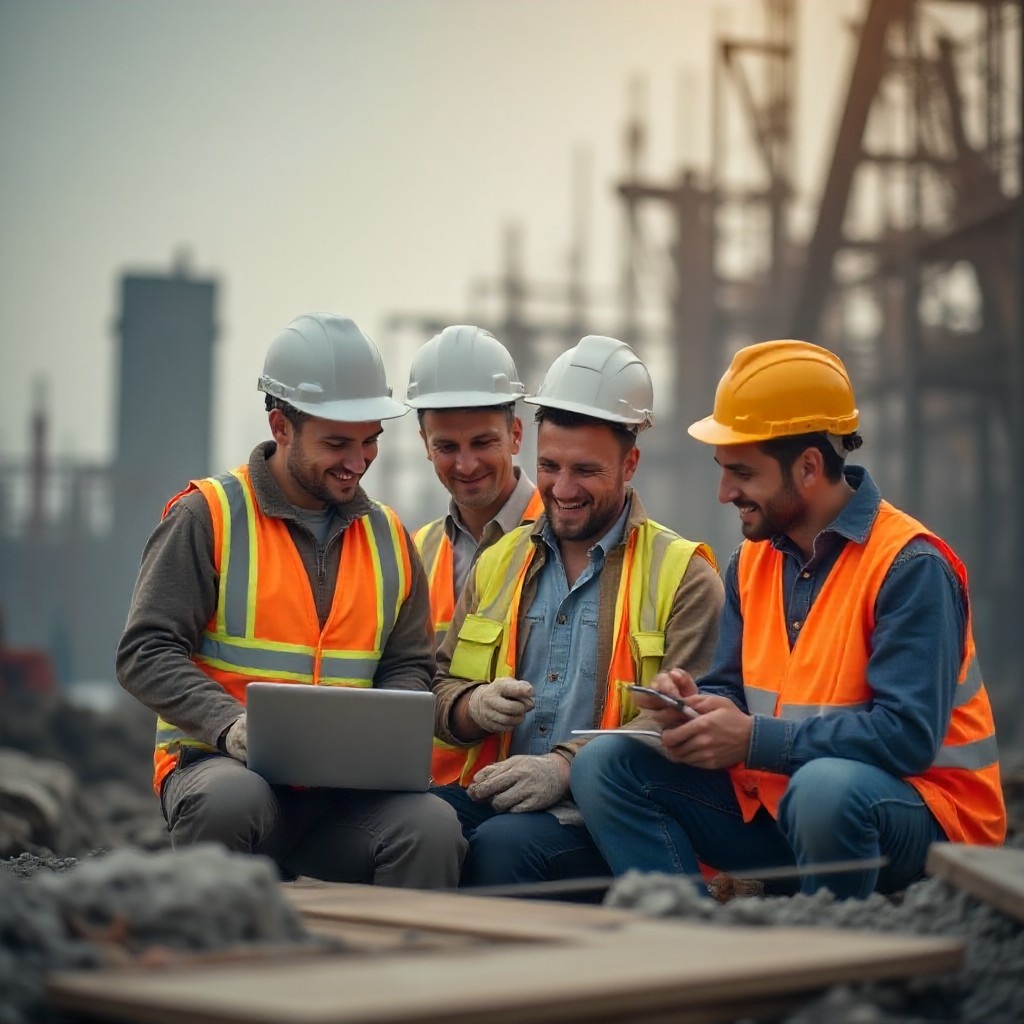Exploring New Construction Technologies and Innovations
The bustling world of construction is undergoing a major transformation, thanks to the integration of sophisticated tools, applications, software, and devices combined with construction technology. Envision it as a digital toolbox, empowering companies at every phase of a construction project. From generative designs, AI-powered scheduling, automated equipment to bid management apps, autonomous weighing machines, and the marvels of artificial intelligence, these technologies are redefining the very fabric of the industry.
The ever-changing construction industry saw major changes due to the pandemic in 2020, but the industry remained resilient. This momentum drove the growth of the industry high, with key factors such as evolving construction methods, technological innovations, market developments and regulatory developments in the construction technology sector.
Significant investments in infrastructure, energy, and infrastructure played an important role in stimulating overall production. In this dynamic landscape, the use of construction software and other technologies plays an important role, seamlessly covering every aspect of the construction process – from project inception to on-site activities and affected infrastructure.
This encompasses a spectrum of tools, ranging from automatic and semi-automatic manufacturing equipment, commercial applications, automatic transportation equipment, mobile devices, robotics, virtual reality (VR), machine learning (ML), and artificial intelligence (AI). These are not just buzzwords; they are the driving forces behind the evolution of construction practices.
Latest construction technology
Building Information Modeling (BIM)
In the contemporary construction landscape, the pivotal role of Building Information Modeling cannot be overstated. This technology serves as the linchpin in project visualization, design & construction collaboration. By offering a unified platform for stakeholders to contribute to a shared model, BIM enhances efficiency and problem-solving during the design and planning phases. This collaborative approach streamlines processes, resulting in improved decision-making throughout the project lifecycle.
Digital Twins

Digital twins stand as a testament to the industry's stride towards virtual innovation. These virtual replicas of physical buildings or infrastructure provide invaluable insights for analysis, monitoring, and control. Construction companies and project owners leverage digital twins to enhance precision, analyze potential hazards, and monitor their facility. This not only ensures project integrity but also creates a safer working environment, aligning with the industry's commitment to safety and efficiency.
3D Laser Scanners
In the pursuit of precision, 3D laser scanning emerges as a technological marvel. These scanners play a crucial role in accurate site measurement, documentation and quality control. By collecting comprehensive data, 3D laser scanners provide the foundation for informed decision-making. The result is a construction process where every element aligns seamlessly with the project's vision, minimizing discrepancies and ensuring higher accuracy.
Site Sensors
The integration of site sensors marks a significant milestone in ensuring safety and efficiency on construction sites. These sensors, strategically placed to monitor parameters like noise levels, temperature, and pollution, play a crucial role in safeguarding the well-being of workers. Immediate alerts in case of exceeding permissible limits underscore how technology is prioritizing the human aspect of construction, ensuring a secure working environment for all.
Data Collection with Mobile Apps
Mobile applications are becoming indispensable tools in simplifying data collection on construction sites. These apps not only facilitate faster and more accurate data gathering but also enhance communication and collaboration. The increased portability of tablets and smartphones ensures that teams can work efficiently from anywhere, saving both time and resources. In an era where real-time data is paramount, mobile apps bridge the gap, providing construction professionals with immediate insights for informed decision-making.
Drones

Drones, often referred to as the unsung heroes of modern construction, redefine site surveys, inspections, and progress monitoring. Their agility and high-resolution cameras enable quick and accurate data collection, creating interactive maps and models. Beyond efficiency, drones ensure a safer work environment by identifying potential hazards and monitoring employees' adherence to safety protocols. The aerial perspective offered by drones revolutionizes project oversight, providing stakeholders with comprehensive insights.
Virtual Reality (VR) and Wearables
Virtual reality (VR) takes centre stage in providing immersive design experiences, allowing stakeholders to walk through projects before they become a reality. Coupled with BIM, VR enhances understanding and reduces the likelihood of mid-project changes. Wearables, on the other hand, are making waves in safety and productivity, with the potential to increase productivity by 8.5% and workplace satisfaction by 3.5%. These technological advancements not only improve the construction experience but also contribute to the industry's commitment to safety and efficiency.
3D Printing

The advent of 3D Printing in construction heralds a new era in material sourcing. Prefabrication takes a giant leap forward as materials can be printed on-site, reducing waste and streamlining the construction process. While challenges exist in mass production, the potential for immediate on-site material availability transforms the way construction projects are executed. The promise of faster project timelines and reduced environmental impact positions 3D Printing as a disruptive force in construction technology.
Artificial Intelligence (AI)
Artificial Intelligence (AI) has emerged as a powerful force in predictive analytics, project management, and automation. Despite the complexities, larger firms are building their AI programs, while others rely on third-party solutions to identify opportunities for AI and machine learning implementation. The result is improved safety, streamlined workflows, and enhanced decision-making processes. AI's role in construction signifies a transformative shift towards data-driven insights, enabling the industry to adapt and thrive in an era of technological disruption.
Autonomous Heavy Machinery
Autonomous heavy machinery is a testament to the fusion of IoT and AI in construction. These machines, equipped with GPS and sensors, navigate construction sites with precision, reducing the need for manual labour in hazardous areas. The integration of geofencing ensures safe working conditions for all employees, exemplifying the harmonious collaboration between technology and human expertise. The adoption of autonomous heavy machinery not only enhances precision but also contributes to reducing labour costs and mitigating risks associated with hazardous work environments.
Benefits of Technology in Construction
The integration of technology is evident within the construction sector, which is known for its diverse projects and challenges as we explore its advantages, a clear narrative unfolds, illustrating how technology stands at the core of progress, innovation, and enhanced teamwork.
Increases Productivity
In the complex construction environment, where each project follows its unique procedures, establishing standardized processes presents a significant challenge. This complexity frequently impedes productivity. Nevertheless, the introduction of technology, particularly Artificial Intelligence (AI) and Machine Learning (ML), has facilitated an enhancement of efficiency. Through the automation and streamlining of processes, technology expedites task completion, driving projects toward quicker realization. The incorporation of AI and ML serves as the behind-the-scenes mechanism orchestrating a synchronized construction process, optimizing each stage for heightened productivity.
Improves Safety
Safety is a critical consideration in the construction sector and benefits from advanced technologies. Virtual Reality (VR), sensors, and wearables play pivotal roles in risk reduction and the promotion of a safety-conscious culture. VR serves as a training platform, allowing employees to refine their skills in a simulated environment, anticipating potential hazards. Meanwhile, sensors and wearables act as unobtrusive monitors, overseeing health statuses and maintaining a secure working environment. These technologies not only protect physical well-being but also instil a safety-first mindset within the industry.
Helps to Manage Labour Shortages
The ongoing challenge of labour shortages in the construction industry encounters a robust solution in the domain of technology. Robotics and project management software take centre stage, providing solutions that go beyond conventional workforce limitations. These technological solutions optimize workforce allocation, ensuring tasks are executed with efficiency and precision.
Automation serves as a hidden workforce, managing repetitive tasks with finesse. Additionally, technology functions as a recruitment tool, supplying construction companies with an extensive database of available candidates. Drones, robots, and autonomous heavy equipment redefine the labour landscape, enabling a reduced workforce to accomplish substantial physical tasks with unparalleled proficiency.
Ensures Better Collaboration

Collaboration, a cornerstone of successful construction projects, often grapples with the challenges posed by large sites and multiple decision-makers. Technology emerges as the catalyst for improved coordination and communication. Cloud-based platforms and Building Information Modeling (BIM) become the digital bridges that connect teams in real-time. These applications foster an environment where information flows seamlessly, decisions are made swiftly, and projects unfold without hindrance. The construction site transforms into a dynamic ecosystem where every stakeholder is synchronized, and the project progresses in a rhythm of collective effort.
Green construction technology
In construction, adopting green building technology is a strategic move towards sustainability. It goes beyond erecting structures, focusing on minimal environmental impact across a building's lifecycle. Green technology analyzes every construction facet, promoting eco-friendly practices from design to demolition.
Solar power deployment is pivotal in sustainable construction. Active systems absorb sunlight for heating and electricity, reducing reliance on conventional sources. Passive solar design harnesses natural heating, minimizing the need for artificial warmth.
Green construction practices not only benefit the environment but also strategically position businesses for success. It minimizes environmental impact through lean practices, striving for zero-energy buildings. The incorporation of material reuse, recycling, and accurate estimating enhances overall sustainability.
Adoption of green technology represents a future-ready approach, driving efficiency, sustainability, and heightened client satisfaction within the construction industry. This strategic move not only benefits the environment but also positions construction businesses for success in an increasingly eco-conscious market.
Future of construction technology
The construction industry is poised for transformative advancements, with emerging technologies reshaping its landscape. Wearable technology, such as Connected Hardhats, is revolutionizing on-site management by monitoring location, motion, and temperature, significantly improving worker safety and reducing incidents. Smart Infrastructure introduces structural monitoring systems that predict and prevent potential issues, ensure site safety, and minimize risks. Virtual Reality (VR) and Augmented Reality (AR) are providing immersive training, simulations, and real-time information overlays, reducing errors and fostering collaboration.
Artificial Intelligence (AI) is emerging as a game-changer, accelerating planning, optimizing operations, and reducing costs. From 3D-printed houses to exoskeletons enhancing worker productivity and safety, the industry is witnessing groundbreaking innovations. Robotics and automation technologies, including humanoid labourers and robot swarms, are mitigating labour shortages and improving efficiency across construction sites. The future promises a construction ecosystem where technology propels unprecedented efficiency, safety, and collaboration.
Conclusion
The trajectory of the construction industry is on a transformative course, with an imminent digital revolution steering its path to unparalleled growth. As the sector undertakes a comprehensive digitization agenda, the next decade promises a radical reshaping of processes and outcomes. The infusion of cutting-edge technologies such as BIM, prefabrication, robotics, and IoT has not only catapulted efficiency, safety, and cost-effectiveness. Still, it has also set the stage for a dynamic and collaborative future.
Despite the existing challenges, the unwavering commitment to adopting innovative technologies paints a promising picture of continuous improvement. Embracing digital transformation is not just an industry trend; it is the cornerstone of future success. It holds the keys to sustained growth and a construction landscape defined by innovation and excellence.
FAQs
How can AI be used in construction?
AI transforms construction by automating processes, ensuring safety, addressing labour shortages, promoting collaboration, optimizing equipment usage, managing project lifecycles, overseeing cost, and monitoring construction processes. CUBE is one of the leading software solutions in the AEC domain that uses of AI-based modules.
What is the latest construction technology in 2024?
In 2024, the latest construction technologies include Generative AI for designs, BIM for real-time collaboration, and drones for enhanced site surveys and analysis.
Advantages of Using Technology in Construction Processes?
The advantages of using technology in construction processes include boosting productivity, enhancing safety, managing labour shortages, and fostering collaboration.




